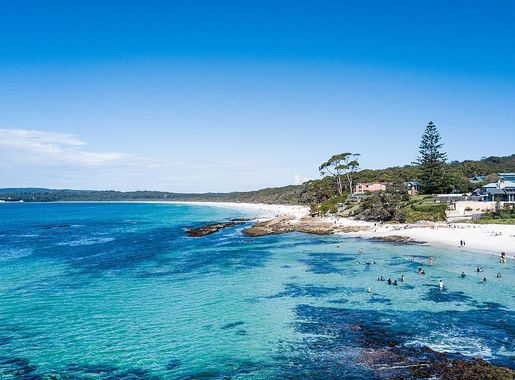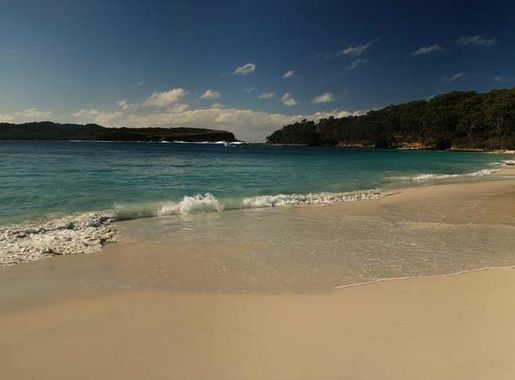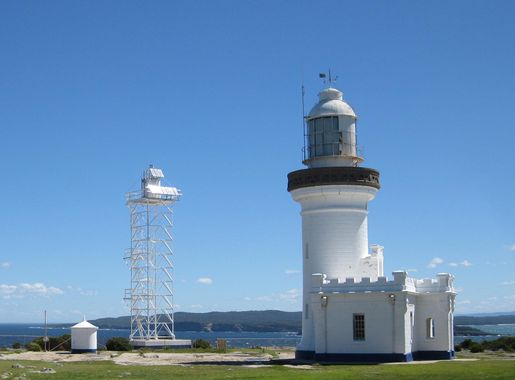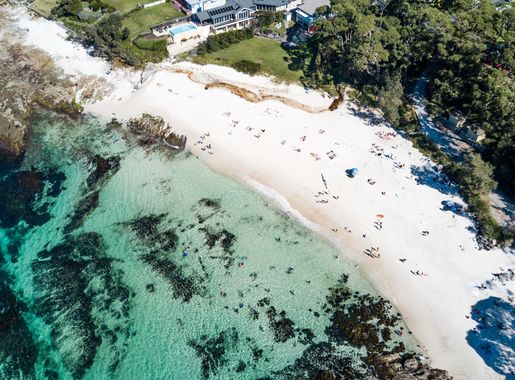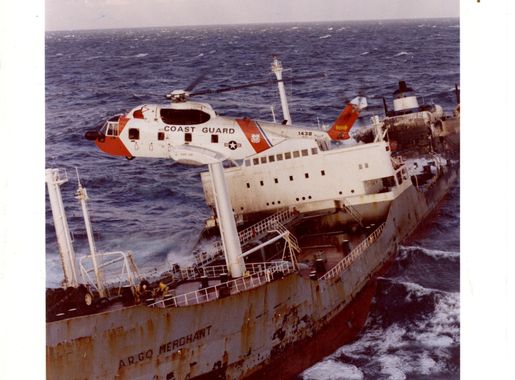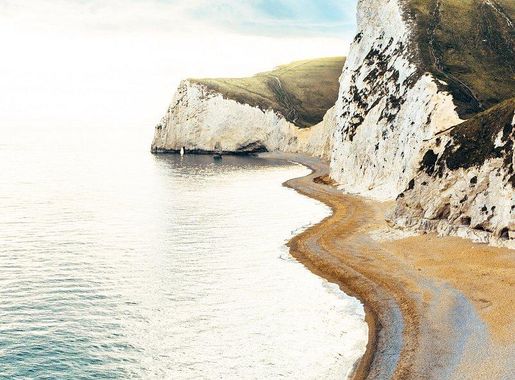
Jervis Bay - Australia’s Coastal Gem
Discover Jervis Bay: Pristine beaches, crystal-clear waters, and abundant marine life await in this serene coastal paradise in New South Wales, Australia.
Jervis Bay, located on the south coast of New South Wales, Australia, is renowned for its crystal-clear waters, pristine beaches, and abundant marine life. It's a perfect destination for those seeking a serene escape and an array of outdoor activities. The bay is famously known for having some of the whitest sands in the world, particularly at Hyams Beach, which is a must-visit for beach lovers. Beyond its stunning beaches, Jervis Bay offers excellent opportunities for snorkeling, diving, and kayaking. The marine park in the area is home to dolphins, whales, and a variety of fish species, making it a paradise for wildlife enthusiasts. During the whale migration season, visitors often spot these majestic creatures from various vantage points along the coast. Nature lovers will appreciate the Booderee National Park, which boasts lush rainforests, picturesque walking trails, and fascinating Aboriginal heritage sites. The park also features the enchanting Green Patch Beach and the historic Cape St George Lighthouse, offering panoramic views of the bay. Whether you're looking to relax on sun-kissed sands, explore underwater wonders, or immerse yourself in nature, Jervis Bay provides an unforgettable experience that highlights the natural beauty and tranquility of Australia's coastline.
Local tips in Jervis Bay
- Visit during mid-week to avoid the weekend crowds and enjoy a more peaceful experience.
- Book snorkeling or diving tours in advance, especially during the peak season.
- Pack a picnic and spend a day at Booderee National Park for a mix of beach and bush experiences.
- Check the tide times before heading to Hyams Beach to experience the whitest sands at their best.
- Don't forget sunscreen and a hat, as the sun can be quite strong even on cooler days.
Jervis Bay - Australia’s Coastal Gem
Jervis Bay, located on the south coast of New South Wales, Australia, is renowned for its crystal-clear waters, pristine beaches, and abundant marine life. It's a perfect destination for those seeking a serene escape and an array of outdoor activities. The bay is famously known for having some of the whitest sands in the world, particularly at Hyams Beach, which is a must-visit for beach lovers. Beyond its stunning beaches, Jervis Bay offers excellent opportunities for snorkeling, diving, and kayaking. The marine park in the area is home to dolphins, whales, and a variety of fish species, making it a paradise for wildlife enthusiasts. During the whale migration season, visitors often spot these majestic creatures from various vantage points along the coast. Nature lovers will appreciate the Booderee National Park, which boasts lush rainforests, picturesque walking trails, and fascinating Aboriginal heritage sites. The park also features the enchanting Green Patch Beach and the historic Cape St George Lighthouse, offering panoramic views of the bay. Whether you're looking to relax on sun-kissed sands, explore underwater wonders, or immerse yourself in nature, Jervis Bay provides an unforgettable experience that highlights the natural beauty and tranquility of Australia's coastline.
When is the best time to go to Jervis Bay?
Iconic landmarks you can’t miss
Jervis Bay National Park
Explore the pristine beauty and diverse wildlife of Jervis Bay National Park, a coastal gem in New South Wales perfect for nature lovers and adventure seekers.
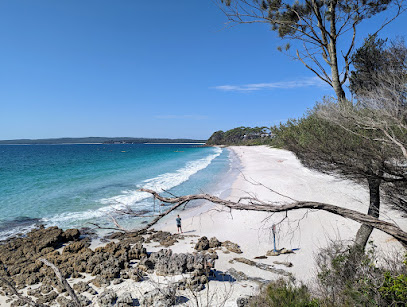
Honeymoon Bay
Experience the breathtaking beauty of Honeymoon Bay in Currarong, NSW – a serene camping ground perfect for nature lovers and adventure seekers.
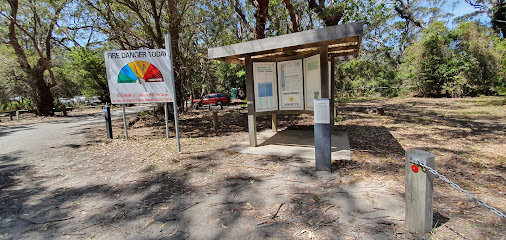
White Sands Park
Experience the tranquil beauty of White Sands Park in Huskisson, where lush landscapes and stunning beaches create the perfect escape for tourists.
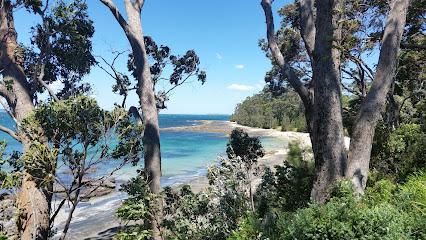
Cape St George Lighthouse
Discover the historic Cape St George Lighthouse in Jervis Bay, where stunning coastal views meet rich Australian maritime heritage.

Moona Moona Park
Experience the beauty of nature at Moona Moona Park, a lush oasis in Huskisson, perfect for relaxation, picnics, and family fun.
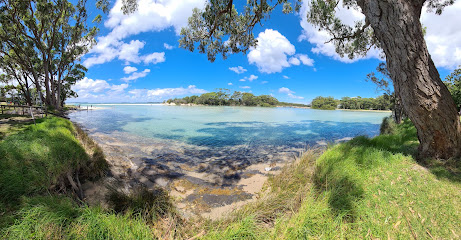
Point Perpendicular Lighthouse
Explore the historic Point Perpendicular Lighthouse on Beecroft Peninsula, a stunning coastal landmark offering breathtaking views and rich maritime history.
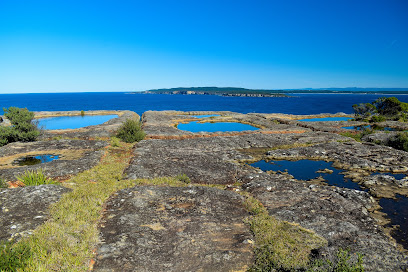
Jervis Bay Maritime Museum
Discover the maritime history of Australia at the Jervis Bay Maritime Museum, where engaging exhibits and stunning waterfront views await.
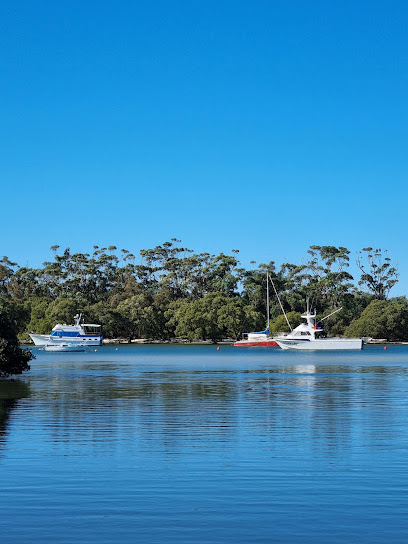
Jervis Bay Wild
Explore Jervis Bay Wild: Home to breathtaking marine adventures, whale watching tours, and serene kayaking experiences in New South Wales.

Dolphin Watch Cruises Jervis Bay
Discover the wonders of Jervis Bay with Dolphin Watch Cruises and experience breathtaking dolphin sightings and marine adventures in New South Wales.
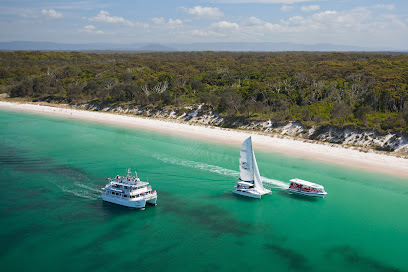
Blenheim Beach, Jervis Bay
Explore Blenheim Beach in Jervis Bay, a pristine nature preserve with golden sands, clear waters, and endless opportunities for outdoor fun.
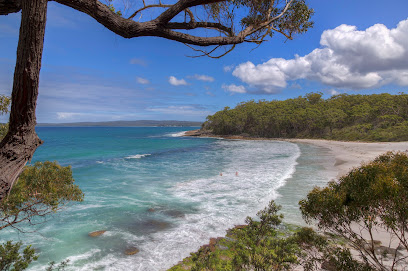
Jervis Bay Brewing Co
Discover the essence of Jervis Bay at Jervis Bay Brewing Co, where craft beer meets stunning coastal views in a vibrant, welcoming atmosphere.
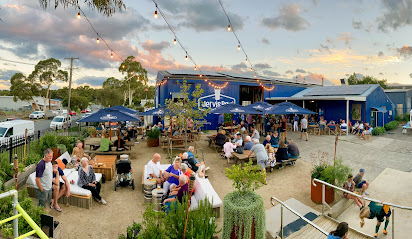
Experience Jervis Bay
Explore the stunning beaches and vibrant nature of Jervis Bay while enjoying the comfort of your ideal vacation rental.

Hyams Beach
Discover the pristine beauty of Hyams Beach, where powdery white sands meet crystal-clear waters in a stunning coastal paradise.
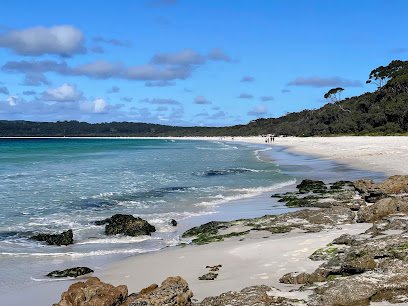
Murrays Beach Boat Ramp
Explore the beautiful Murrays Beach Boat Ramp in Jervis Bay, a perfect spot for boating, fishing, and soaking in the coastal beauty.

Chinamans Beach
Discover the tranquility of Chinamans Beach in New South Wales, where golden sands meet turquoise waters for an unforgettable coastal experience.
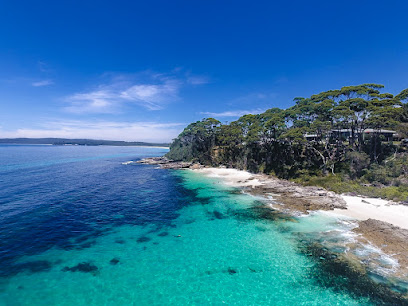
Unmissable attractions to see
Little Blowhole
Experience the awe-inspiring beauty of Kiama's Little Blowhole, a natural wonder showcasing spectacular ocean displays and stunning coastal scenery.
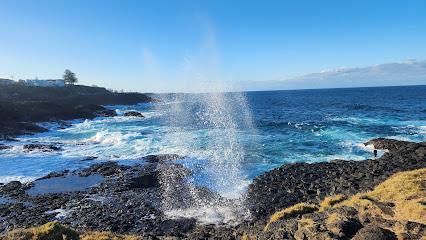
Minnamurra Rainforest Centre
Explore the stunning Minnamurra Rainforest Centre, a perfect blend of nature, hiking trails, and serene landscapes in New South Wales.
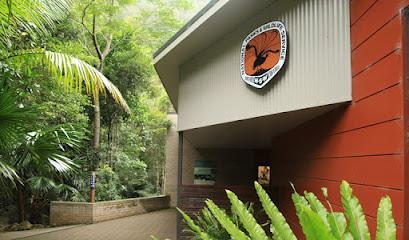
Shoalhaven Zoo And Adventure World
Discover an exciting wildlife adventure at Shoalhaven Zoo, where exotic animals and thrilling activities await your visit in beautiful New South Wales.

Carrington Falls
Explore the breathtaking beauty of Carrington Falls in Budderoo National Park, a perfect destination for relaxation and stunning nature experiences.
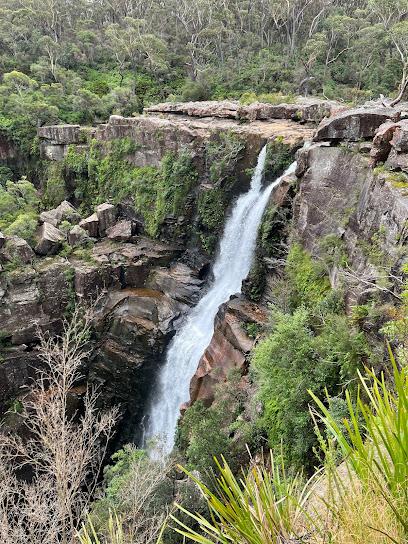
Hampden Bridge
Discover Hampden Bridge, a historic gem in Kangaroo Valley, offering stunning views, rich history, and a serene escape into nature.
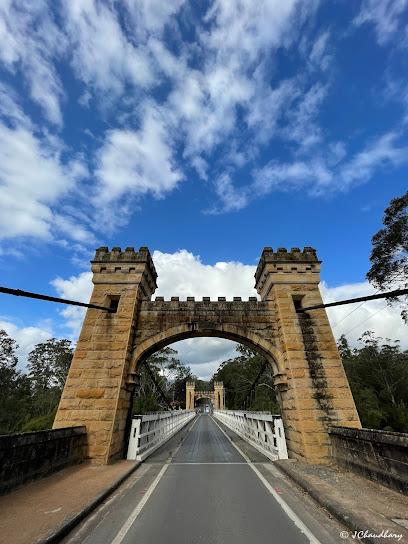
Green Patch Campsite
Experience the natural beauty of Green Patch Campsite in Booderee National Park, where stunning beaches and lush landscapes await.
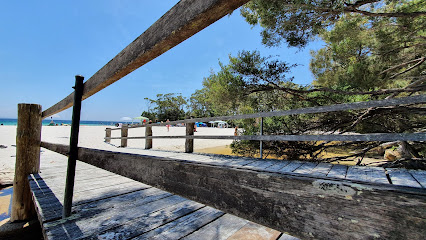
Bombo Headland Geological Site
Experience the breathtaking beauty and geological wonders of Bombo Headland, a must-see natural attraction along the New South Wales coastline.
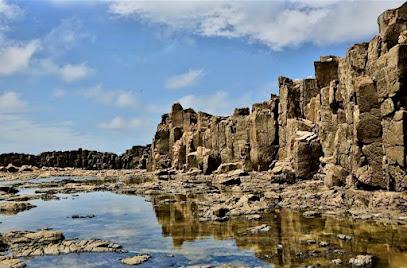
Honeymoon Bay
Discover the tranquility of Honeymoon Bay, a camping ground surrounded by stunning landscapes and crystal-clear waters in Currarong, NSW.
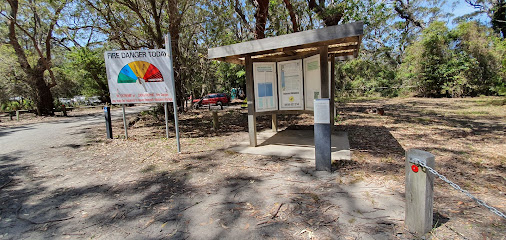
White Sands Park
Enjoy a serene escape at White Sands Park, a picturesque destination in Huskisson, New South Wales, perfect for relaxation and outdoor adventures.
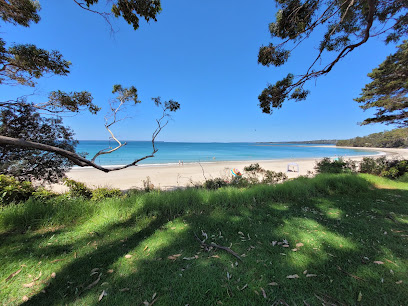
Cape St George Lighthouse
Explore the enchanting Cape St George Lighthouse, a historic landmark amidst the pristine beauty of Booderee National Park in Jervis Bay.
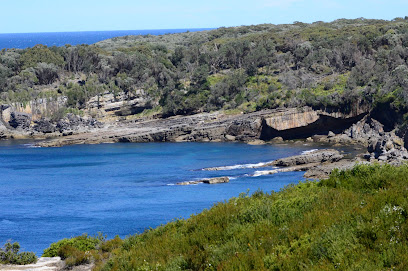
Moona Moona Park
Experience the stunning beauty of Moona Moona Park in Huskisson, a perfect destination for families and nature lovers seeking outdoor adventures.
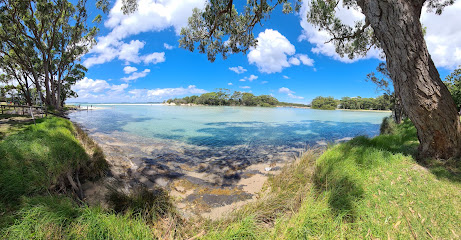
Point Perpendicular Lighthouse
Explore the stunning Point Perpendicular Lighthouse, a historic landmark offering breathtaking coastal views and scenic walking trails in New South Wales.
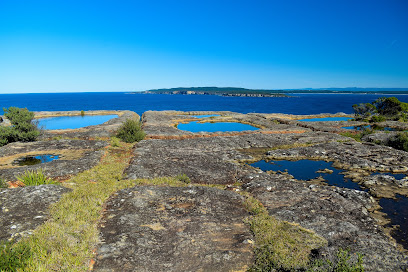
Jervis Bay Maritime Museum
Explore Jervis Bay Maritime Museum: A Unique Maritime Heritage Experience in the Heart of Huskisson, New South Wales.
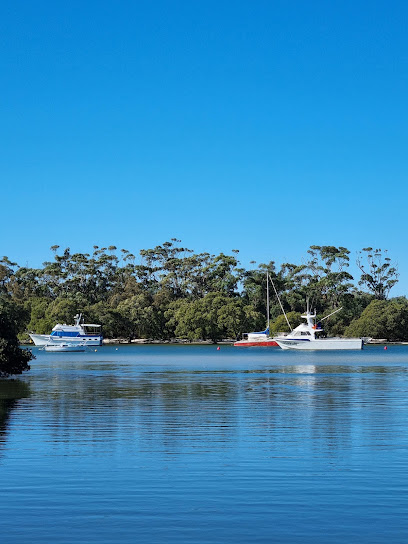
Callala Beach
Experience the serene beauty and adventure at Callala Beach, a perfect destination for relaxation and outdoor activities in New South Wales.
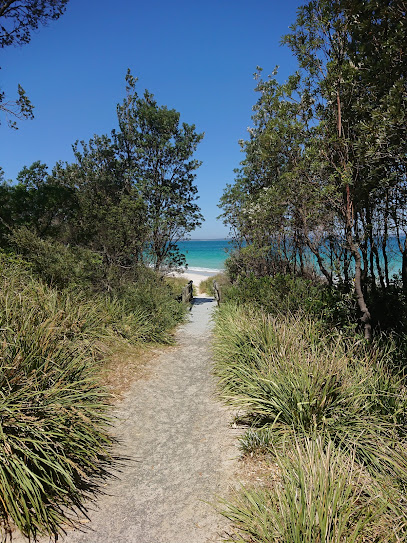
Blenheim Beach, Jervis Bay
Discover the serene beauty of Blenheim Beach in Jervis Bay, a perfect blend of pristine sands and crystal-clear waters in New South Wales.
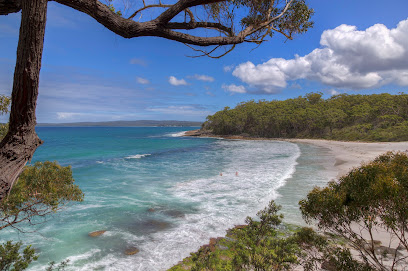
Essential places to dine
Huskisson Hotel
Experience coastal charm at Huskisson Hotel - where dining meets stunning views in New South Wales' beautiful Jervis Bay.
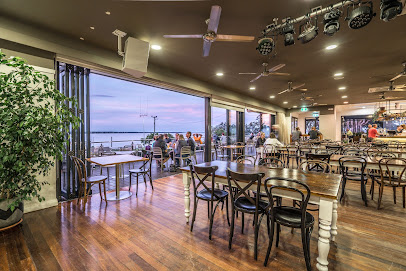
5 Little Pigs
Experience delightful breakfasts and artisanal coffee at 5 Little Pigs in Huskisson - your perfect coastal cafe getaway.
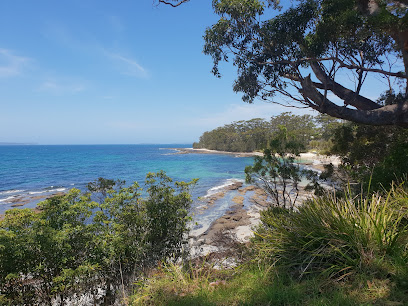
Stonegrill Huskisson
Discover exquisite seafood and premium steaks at Stonegrill Huskisson - where every meal is an unforgettable culinary adventure.
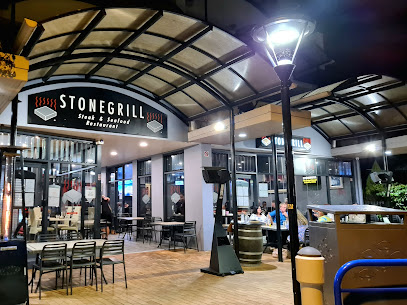
World Famous Fish N Chips
Experience iconic Australian fish and chips at World Famous Fish N Chips in Huskisson - fresh flavors by the sea!
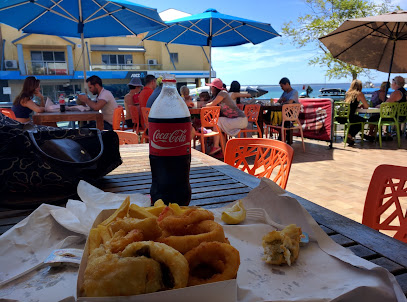
Cooked Goose on Hyams
Discover delightful breakfasts and artisanal coffee at Cooked Goose on Hyams – your perfect beachside retreat in New South Wales.
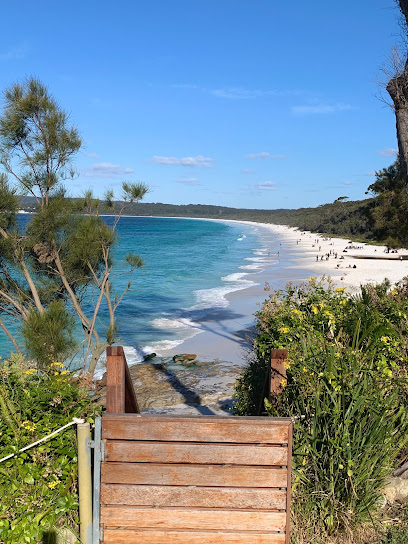
Pasta & Pizza Peter Eva Italian restaurant
Experience authentic Italian cuisine at Peter Eva in Huskisson—where delicious pasta meets gourmet pizza in a cozy atmosphere.
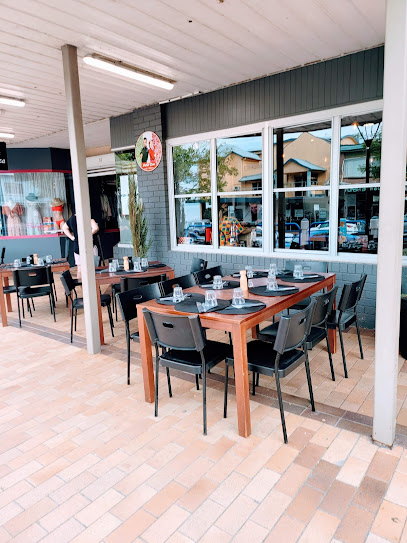
Club Jervis Bay
Experience the flavors of coastal New South Wales at Club Jervis Bay - your go-to destination for dining and leisure.

Salty Joe's
Discover Salty Joe's in Huskisson: A coastal culinary gem offering fresh local flavors in a relaxed atmosphere perfect for any time of day.
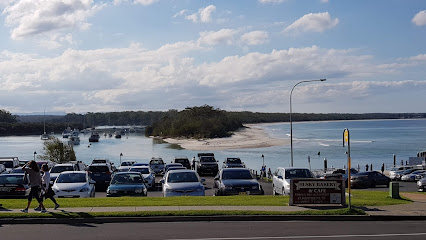
Angels Bayside Cafe
Discover delightful breakfasts and lunches at Angels Bayside Cafe in Huskisson with breathtaking waterfront views.
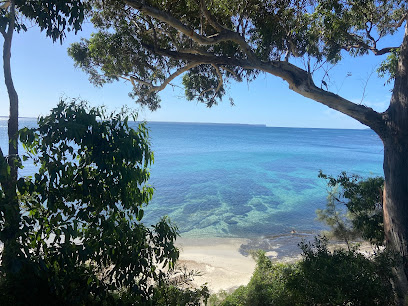
Taj Indian Restaurant Huskisson
Discover the rich flavors of India at Taj Indian Restaurant in Huskisson - where every dish tells a story.
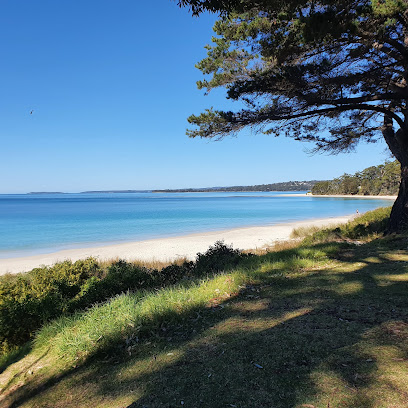
Wildginger Huskisson
Experience exquisite Asian-inspired cuisine at Wildginger Huskisson, where fresh local ingredients meet exceptional dining in New South Wales.
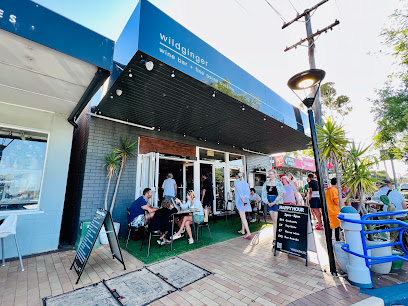
Huskisson Bakery & Cafe
Discover delicious baked goods and cozy ambiance at Huskisson Bakery & Cafe – your go-to spot in beautiful Huskisson.

Nana on the bay Thai Restaurant
Discover authentic Thai flavors at Nana on the Bay Restaurant in Vincentia - where culinary excellence meets breathtaking coastal views.

Pasta Buoy
Experience authentic Italian cuisine at Pasta Buoy in Huskisson - where every dish tells a story of tradition and flavor.
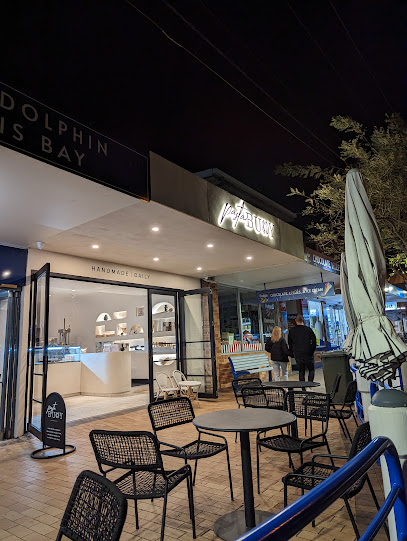
Calabrisella Woodfired Pizzeria Callala Beach
Experience authentic Italian wood-fired pizza at Calabrisella Pizzeria in Callala Beach - where every bite transports you to Italy.
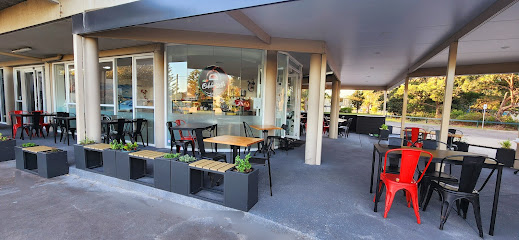
Markets, malls and hidden boutiques
Vincentia Shopping Village
Explore Vincentia Shopping Village, a charming hub of shopping and community spirit in New South Wales, offering a variety of unique shops and local events.
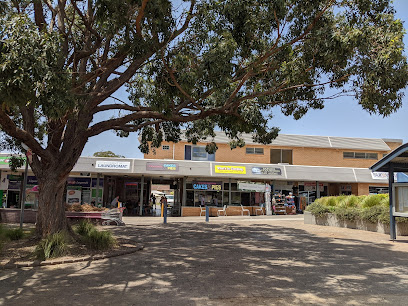
Jervis Bay Supermarket
Discover Jervis Bay Supermarket, your one-stop shop for local produce and essentials in the beautiful coastal region of Jervis Bay.
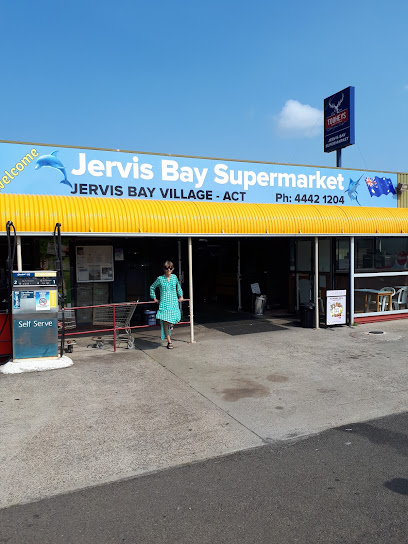
Jervis Bay Coffee Co
Experience the best of Jervis Bay at Jervis Bay Coffee Co, where quality coffee meets a charming coastal atmosphere.

Huskisson Trading Post
Explore the unique charm of Huskisson Trading Post, a treasure trove of antiques and collectibles in the heart of Huskisson, New South Wales.
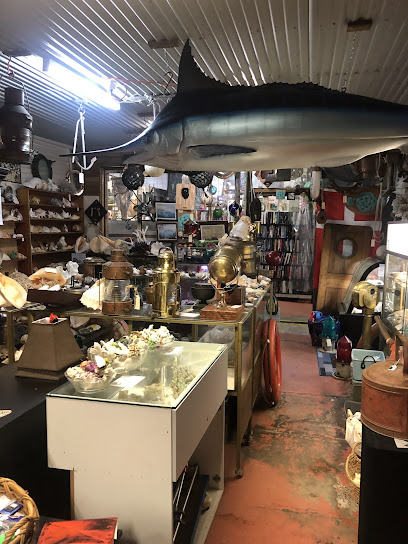
Jervis Bay Fudge
Discover the sweet side of Huskisson at Jervis Bay Fudge, where delectable ice creams and homemade fudge await every visitor.
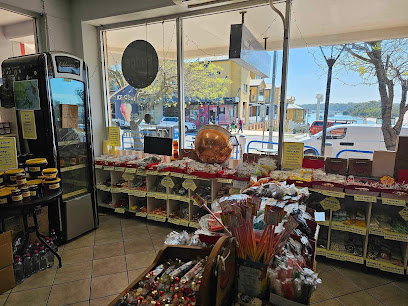
Kiki - The Hippie Shop
Discover a vibrant collection of unique gifts, clothing, and homewares at Kiki - The Hippie Shop in Huskisson, where bohemian spirit comes alive.

Toyworld Vincentia
Discover a delightful range of toys and hobbies at Toyworld Vincentia, where imagination and fun come to life for every visitor.
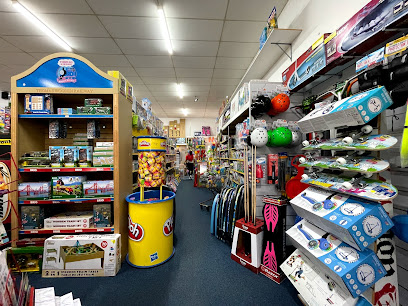
Huskisson Treasure Chest
Explore Huskisson Treasure Chest for unique gifts and beach treasures that celebrate the charm of New South Wales' coastal culture.
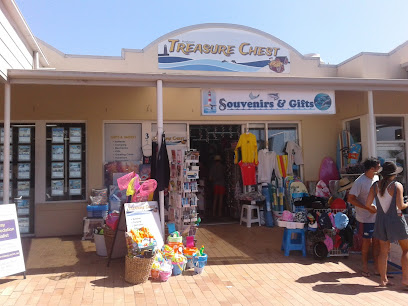
Boobook on Owen
Explore the charming Boobook on Owen in Huskisson – a delightful bookstore offering a curated selection of literature and local authors.

Husky Emporium
Discover unique gifts and local craftsmanship at Husky Emporium, Huskisson's charming gift shop filled with clothing, homewares, and accessories.
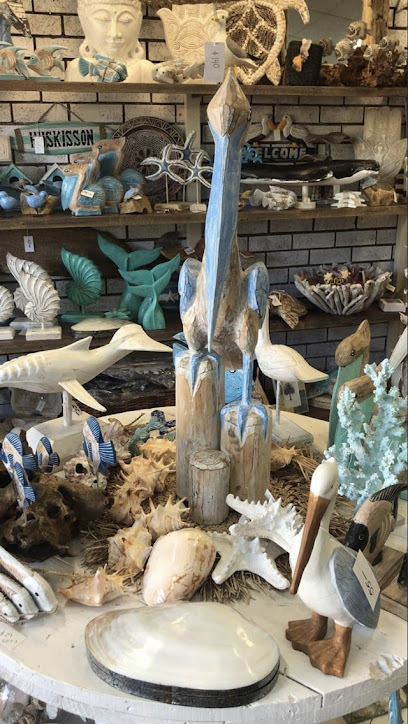
The Collective Beat Huskisson
Explore the vibrant world of local craftsmanship at The Collective Beat Huskisson, where unique treasures await every visitor.
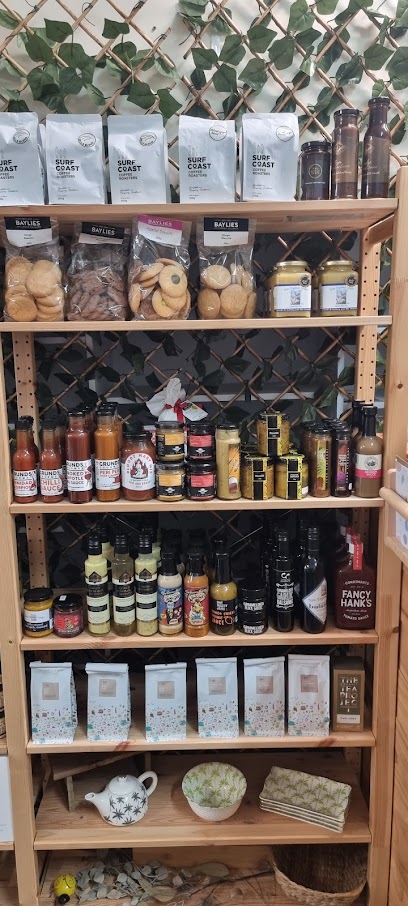
White Earth Huskisson
Explore White Earth Huskisson for unique gifts, beauty products, and artisanal candles that reflect the local charm and craftsmanship.
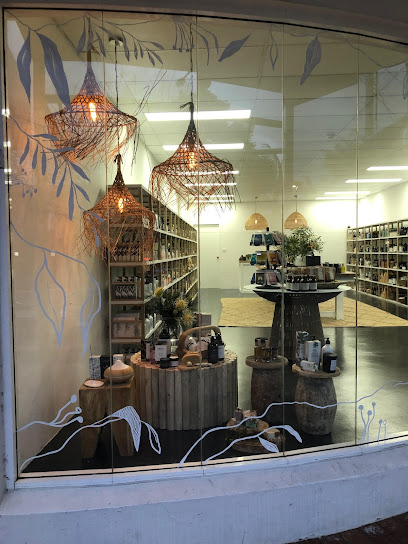
Ethik
Explore Ethik in Huskisson for unique handicrafts and fashion accessories that embody the charm of Australian coastal culture.

Beyond The Beach
Explore Beyond The Beach, Huskisson’s premier clothing store for unique beachwear and stylish apparel that complements your coastal adventure.

Jay On The Bay
Discover stylish coastal fashion at Jay On The Bay in Huskisson, where unique apparel and friendly service await every traveler.
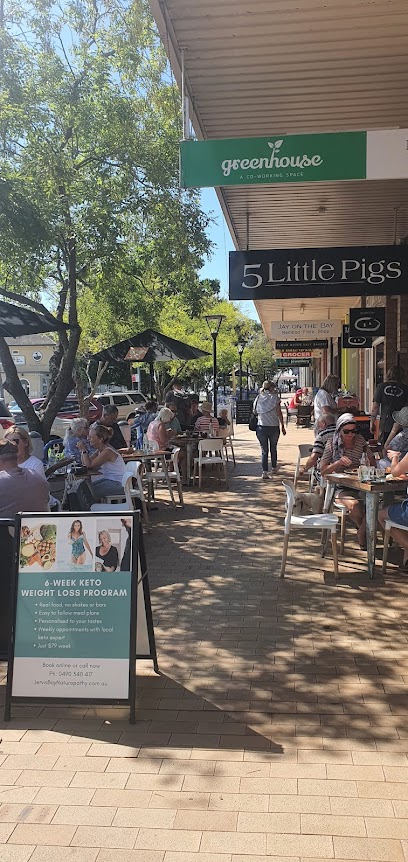
Essential bars & hidden hideouts
Huskisson Hotel
Discover the Huskisson Hotel: A coastal retreat blending bar, restaurant, and hotel experiences with stunning views and local flavors.
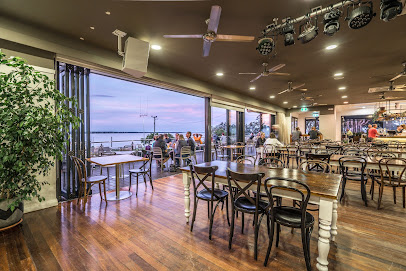
5 Little Pigs
Savor fresh and delicious breakfast and lunch at 5 Little Pigs, a charming café in Huskisson known for its local produce and expertly brewed coffee.
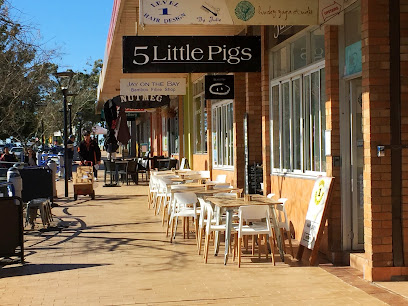
Stonegrill Huskisson
Savor the unique dining experience at Stonegrill Huskisson, where fresh seafood and steaks are cooked to perfection on hot stones.
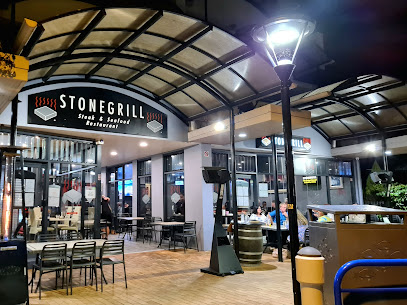
Pasta & Pizza Peter Eva Italian restaurant
Experience authentic Italian cuisine at Pasta & Pizza Peter Eva, where every bite takes you on a journey to Italy's culinary heart.

Club Jervis Bay
Discover the flavors of Huskisson at Club Jervis Bay, a family-friendly venue featuring diverse dining options including seafood and pizza.

Salty Joe's
Experience the charm of Salty Joe's in Huskisson: a vibrant bar and restaurant with fresh local cuisine and stunning coastal views.
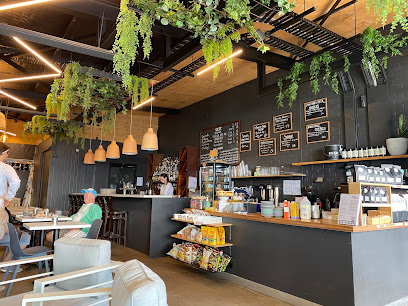
Wildginger Huskisson
Discover the vibrant flavors of Wildginger Huskisson, where Asian cuisine meets local ingredients in a charming coastal setting.
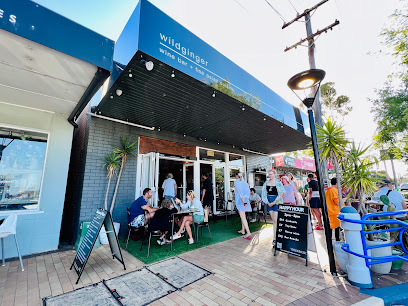
Jervis Bay Brewing Co
Discover unique craft beers in the heart of Huskisson at Jervis Bay Brewing Co, where local flavor meets sustainable brewing.

Husky Sports
Experience the vibrant atmosphere and stunning coastal views at Husky Sports, a premier bar and club in Huskisson, New South Wales.
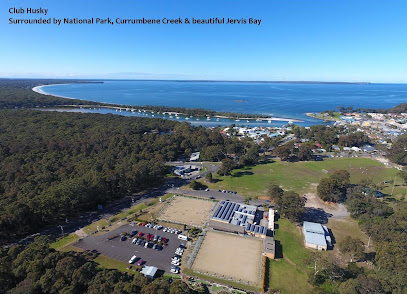
Cooee Hotel
Experience the charm of Cooee Hotel in St Georges Basin, where relaxation meets vibrant entertainment amidst stunning natural beauty.
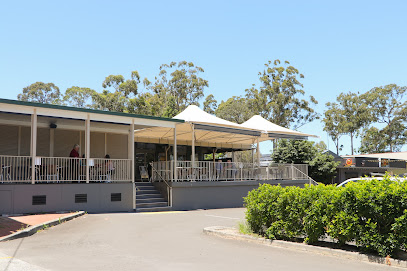
Pasta Buoy
Experience the best of Italian cuisine at Pasta Buoy in Huskisson, where fresh ingredients meet coastal charm for an unforgettable dining experience.
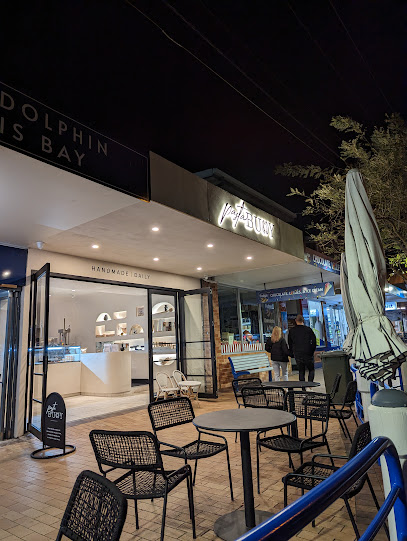
Portside Cafe
Discover the charm of Portside Cafe in Huskisson, where delicious breakfasts and aromatic coffee meet stunning coastal views.
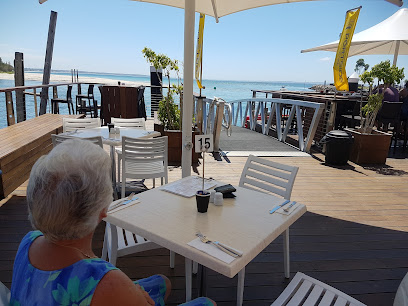
Flamin Galah Brewing Co
Explore the flavors of Huskisson at Flamin Galah Brewing Co, a must-visit brewery offering artisanal craft beers in a welcoming atmosphere.
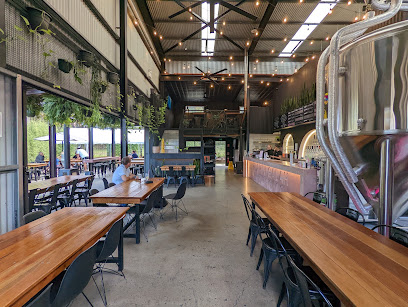
Sandbar Restaurant & Bar
Discover the coastal charm and culinary delights of Sandbar Restaurant & Bar in Huskisson, where every meal is a celebration of local flavors.
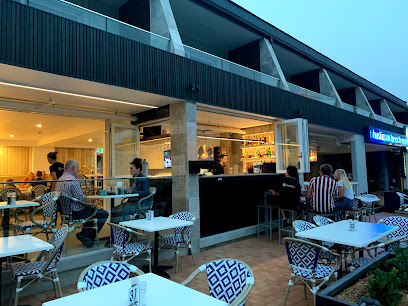
The Gunyah Restaurant at Paperbark Camp
Experience the perfect blend of nature and fine dining at The Gunyah Restaurant, where locally sourced flavors meet tranquil Australian bushland.
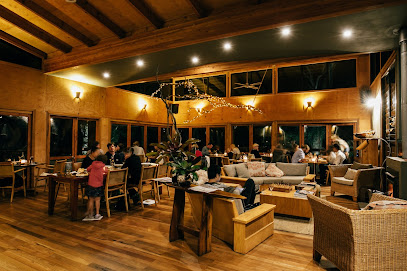
Local Phrases about Jervis Bay
-
- HelloG'day
[g'day] - GoodbyeSee ya
[see ya] - YesYeah
[yeah] - NoNah
[nah] - Please/You're welcomeNo worries
[no worries] - Thank youCheers
[cheers] - Excuse me/SorrySorry mate
[sorry mate] - How are you?How ya goin'?
[how ya goin'] - Fine. And you?Good. You?
[good. you?] - Do you speak English?You speak English?
[you speak English?] - I don't understandI'm lost mate
[I'm lost mate]
- HelloG'day
-
- I'd like to see the menu, pleaseCan I check the menu?
[can I check the menu?] - I don't eat meatI'm vego
[I'm vego] - Cheers!Cheers!
[cheers!] - I would like to pay, pleaseCan I pay now, please
[can I pay now, please]
- I'd like to see the menu, pleaseCan I check the menu?
-
- Help!Help!
[help!] - Go away!Bugger off!
[bugger off!] - Call the Police!Ring the cops!
[ring the cops!] - Call a doctor!Get a doc!
[get a doc!] - I'm lostI'm lost
[I'm lost] - I'm illI'm crook
[I'm crook]
- Help!Help!
-
- I'd like to buy...I'm keen to buy...
[I'm keen to buy...] - I'm just lookingJust browsing
[just browsing] - How much is it?How much?
[how much?] - That's too expensiveToo dear mate
[too dear mate] - Can you lower the price?Can you do a better price?
[can you do a better price?]
- I'd like to buy...I'm keen to buy...
-
- What time is it?What's the time?
[what's the time?] - It's one o'clockIt's one
[it's one] - Half past (10)Half ten
[half ten] - MorningMornin'
[mornin'] - AfternoonArvo
[arvo] - EveningEvenin'
[evenin'] - YesterdayYesty
[yesty] - TodayToday
[today] - TomorrowTomorra
[tomorra] - 1One
[one] - 2Two
[two] - 3Three
[three] - 4Four
[four] - 5Five
[five] - 6Six
[six] - 7Seven
[seven] - 8Eight
[eight] - 9Nine
[nine] - 10Ten
[ten]
- What time is it?What's the time?
-
- Where's a/the...?Where's the...?
[where's the...?] - What's the address?What's the addy?
[what's the addy?] - Can you show me (on the map)?Show me (on the map), please
[show me (on the map), please] - When's the next (bus)?When's the next (bus)?
[when's the next (bus)?] - A ticket (to ....)A ticket (to ....)
[a ticket (to ....)]
- Where's a/the...?Where's the...?
History of Jervis Bay
-
The Jervis Bay area is the traditional land of the Dharawal and Jerrinja people. For thousands of years, they have lived off the land and sea, maintaining a deep connection to the natural environment. Evidence of their rich culture can be seen in rock art, middens, and ancient ceremonial sites scattered throughout the region.
-
In 1770, Captain James Cook became the first European to sight Jervis Bay, although he did not enter it. The bay was later named by Lieutenant Richard Bowen in 1791 to honor Sir John Jervis, a British naval hero. Early European explorers were drawn to the area by its natural beauty and strategic location.
-
The first recorded European settlement in Jervis Bay was established in the early 19th century. Settlers were initially engaged in whaling and fishing, but the area's fertile land also led to the development of agriculture. By the late 1800s, small communities had formed around the bay, including Huskisson and Vincentia.
-
In 1915, the Jervis Bay Territory was ceded by New South Wales to the Commonwealth Government to provide the landlocked Australian Capital Territory with access to the sea. This area later became the site of the Royal Australian Navy College, established in 1913 at Captain's Point. The Navy's presence has played a significant role in the development and protection of the region.
-
Declared in 1995, Jervis Bay National Park protects a variety of ecosystems, including coastal forests, wetlands, and marine environments. The park is a haven for wildlife and a popular destination for tourists seeking to enjoy the natural beauty of the bay. It also serves to preserve the cultural heritage of the indigenous Dharawal and Jerrinja people.
-
In recent decades, Jervis Bay has become a popular tourism destination, famous for its pristine beaches, clear waters, and marine biodiversity. Activities such as whale watching, diving, and kayaking attract visitors from around the world. Despite its popularity, efforts have been made to ensure sustainable development and protect the area's natural and cultural heritage.
Jervis Bay Essentials
-
Jervis Bay is located on the southeastern coast of Australia, approximately 200 kilometers south of Sydney. The nearest airport is Canberra Airport, which is about a 2-hour drive from Jervis Bay. From Sydney, you can drive to Jervis Bay via the Princes Highway, which takes around 3 hours. Alternatively, you can take a train from Sydney to Bomaderry (Nowra), followed by a bus or taxi to Jervis Bay.
-
Jervis Bay is best explored by car, as public transport options within the area are limited. Renting a car is highly recommended for convenience and flexibility. However, there are local bus services and taxis available for those who prefer not to drive. Biking is also a popular way to explore the natural beauty of the area, with many bike-friendly paths and trails.
-
The official currency in Australia is the Australian Dollar (AUD). Credit and debit cards are widely accepted in most establishments, including hotels, restaurants, and shops. ATMs are available in the main towns, but it is advisable to carry some cash, especially when visiting more remote areas or smaller businesses.
-
Jervis Bay is generally a safe destination for tourists. However, it is always wise to take standard precautions. Avoid leaving valuables unattended on the beach or in your vehicle. While there are no specific high-crime areas targeting tourists, staying aware of your surroundings and avoiding isolated areas at night is advisable. Additionally, be cautious when swimming, as some areas may have strong currents or marine life such as jellyfish.
-
In case of emergency, dial 000 for immediate assistance. This number will connect you to police, fire, or medical services. The nearest hospital is Shoalhaven District Memorial Hospital in Nowra, approximately 30 minutes' drive from Jervis Bay. Pharmacies are available in the main towns, and it is recommended to have travel insurance that covers medical emergencies.
-
Fashion: Do wear comfortable, casual clothing suitable for outdoor activities. Don’t wear overly revealing or inappropriate attire, especially in family-friendly areas. Religion: Do respect local customs and traditions, though Jervis Bay is generally secular. Public Transport: Do be polite and patient when using bus services. Don’t expect frequent schedules; plan ahead. Greetings: Do greet people with a friendly 'hello' or 'hi.' Australians are generally informal in their interactions. Eating & Drinking: Do try local seafood and Australian cuisine. Don’t litter or leave trash behind, especially in natural and protected areas.
-
To experience Jervis Bay like a local, visit the local farmers' markets where you can buy fresh produce and artisanal products. Engage with locals, who are often friendly and willing to share tips about hidden beaches and scenic spots. Don’t miss out on whale watching tours from May to November, as Jervis Bay is a prime location for observing migrating whales. For a unique experience, take a guided kayak tour to explore the bay’s pristine waters and marine life.
Trending Landmarks in Jervis Bay
-
Jervis Bay National Park
-
Honeymoon Bay
-
White Sands Park
-
Cape St George Lighthouse
-
Moona Moona Park
-
Point Perpendicular Lighthouse
-
Jervis Bay Maritime Museum
-
Jervis Bay Wild
-
Dolphin Watch Cruises Jervis Bay
-
Blenheim Beach, Jervis Bay
-
Jervis Bay Brewing Co
-
Experience Jervis Bay
-
Hyams Beach
-
Murrays Beach Boat Ramp
-
Chinamans Beach
Nearby Cities to Jervis Bay
-
Things To Do in Canberra
-
Things To Do in Melbourne
-
Things To Do in Byron Bay
-
Things To Do in Gold Coast
-
Things To Do in Surfers Paradise
-
Things To Do in Brisbane
-
Things To Do in Hobart
-
Things To Do in Noosa
-
Things To Do in Adelaide
-
Things To Do in Kangaroo Island
-
Things To Do in Airlie Beach
-
Things To Do in The Whitsundays
-
Things To Do in Phillip Island
-
Things To Do in Kingston
-
Things To Do in Burnt Pine


